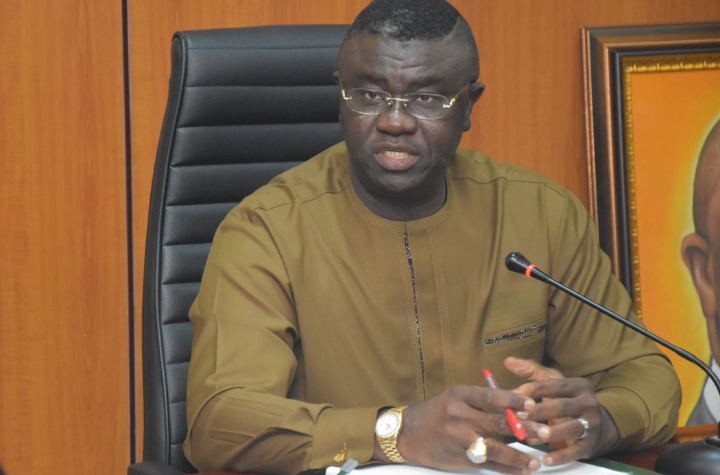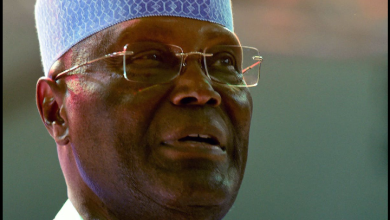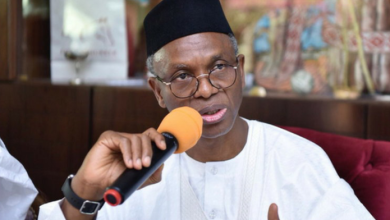Multidimensional Poverty Index Will Help Us Understand Causes Of Poverty – Agba

Prince Clem Agba, the Minister of State for Budget and National Planning, in this interview with Daily Trust, said the federal government conducted the Multidimensional Poverty Index to have a holistic view of the causes of poverty in the country and ways to fix them. Excerpt.
The Federal Government introduced the National Development Plan 2021 – 2015, what is the rationale for it?
For a very long time, national development plans have been an issue in our country, where we have been focusing on short term plans, maybe a two- to three-year plan, or as so many years ago, when we used to have a five-year rolling development plan. We have come back to that; we now have the National Development Plan 2021 to 2025. This is one of the most participatory national development plans we have ever had because it was done button-up. It was not done by consultants, but Nigerians and led by the organised private sector. It was worked upon by the three main political parties of PDP, APC and APGA. It was equally worked upon by governors, traditional institutions, religious institutions, the physically challenged and the youth, who all formed the bedrock of the plan. This is because the plan is for all.
One thing that clearly comes from the plan is why we have not made progress on the past plan implementation. If you look at our Gross Domestic Product, 92 per cent contribution is from the private sector. The people developing the plan constitute 8 per cent, which is only the government making the plan for the private sector.
This is one of the reasons we decided that the private sector should lead; when they lead, they understand their problems and we can focus our plans on those issues that militate against their progress.
About 10 policies were identified as binding constraints militating against private sector. For the first time in the planning history of Nigeria, we created what we called volume three of the plan and titled it legislative imperative. We have since set up a committee to work on these laws and they are working with a renowned legal firm in the country so that the National Assembly can repeal some of those laws or re-enact them to allow the private sector to thrive.
Part of the things we are seeing is the multiplicity of taxes and levies; local governments will do theirs, the state will do and federal. Meanwhile, it is one economy, so, some of these laws will help to take care of this, and I am also glad that some of the states are willing to work with the Federal Inland Revenue Service (FIRS) to collect their revenue because seeing different faces come every day to ask and make demands. It is killing the economy.
Also, we developed Volume 2 of the plan, which are the prioritized projects to be embarked upon in the next couple of years. These projects are to be worked on by ICRC and BPE with a view to doing some analysis and seeing which projects are bankable. The bankable projects don’t need to be funded by the government but by the organised private sector.
Nigeria before now always used the monetary poverty index to determine who was poor in the country. Using that index, we have said about 32 per cent of people are poor in the country but in over 100 countries of the world, what they now use is the Multi-dimensional Poverty Index. That goes beyond the money that is available to individuals. You might have money but don’t have access to education or health, there may be that the nearest health facilities to an individual are three or four hours away, though, you might be in a rural community, a big-time farmer with money, but when you fall ill before they get you to the next hospital you are gone.
This is markedly different from the narrow focus on only monetary poverty measurement. It is important to note that while MPI 2022 provides a new perspective on poverty, it complements rather than replaces monetary poverty data. Likewise, it does not measure the same households in its sample as Nigeria’s monetary poverty line, but through its 15 indicators grouped under four dimensions of health, education, living standards, and work and shocks.
It sheds further light on the lived experience and nature of poverty for Nigerian households. Both monetary poverty and MPI provide a holistic insight into the poverty status of the country
“So, the MPI concentrates on deprivations. This is in terms of access to health, basic education, water among others. So, the first MPI showed that while monetary poverty is 32 per cent, MPI is at 63 per cent, which is about 133 million Nigerians.
“Unlike monetary poverty, where it was like a general number, this time we want to see the face of poverty because we selected 109 senatorial districts in the country. The result shows that it is not the money a state receives but how they spend the money and where they spend the money.
“One thing that is also clear in all of the indicators of the report is that 72 per cent of the poor are in rural areas. These are the parts where we don’t have hospitals or schools. So, it is putting money in these areas that will help to really alleviate poverty and begin to engender growth.
As a government, we will continue to release the numbers the way they come and we won’t doctor them. If we don’t have the data, then we can’t work on the problem facing us.
We are not running a unitary system of government. There is this confusion that the federal government should give instructions to the states, we run a federation and every state is on its own. What we can do is what we have done, make the report available. The report was not just that of the National Bureau of Statistics but all the states involved.
It is just that some people will not pay attention to it. Reasons we called for the state to know the areas we have seen to be lacking and lagging behind is the area of rural development, that is why we called the states out.
I am sure they know it is their responsibility and we have done an advertorial to show who is responsible for what. It is very clear and I am sure that is why the conversation died down.
It is not about condemning the state but putting the facts out there so that those responsible will do the needful for our people. It will take people like you to keep the conversation going. We need to speak to appropriate authorities for effective tackling of issues.
I hear people talking about the number of out-of-school-children growing, therefore, President Muhammadu Buhari is not doing his work. But who is responsible for primary education, is it the president? No, it is subnational. So, we need to tell the state government that out-of-school-children are growing, you need to do something rather than saying the government should do something. Same thing with regards to health
The Open Government Partnership (OGP) is a global partnership for reformers from both government and civil society who work together to make the governance process open, accountable and citizen-driven. At the core of the OGP is a commitment from participating countries to undertake meaningful new steps as part of concrete actions to deepen good governance and service delivery while empowering citizens.
There are the improved budgetary processes that have led the Federal Ministry of Finance, Budget and National Planning to return the country to the January to December budgetary cycle in 2020. We achieved the same feat in 2021 and 2022. The 2023 federal budget will not be different. We hope that successive administrations will ensure that this continues.
Significantly, it has also removed uncertainties associated with delayed budgets, which include delayed investment, thus making the implementation of government programmes and projects predictable. In fact, the early submission of the federal government’s annual budget enables the states to use the budget assumptions to prepare their annual budgets. Efforts are made to ensure prompt distribution of the federally collected revenues to the federating units to enable them to implement their budgets.














